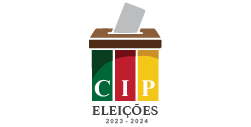General Elections 67 – 06 October 2019
The way the vote is recorded during the count is a key to one of the most important methods for observers and party delegates to prevent ballot box stuffing, but the manual for polling station staff (MMVs, membros de mesa de voto) makes a major error in the explanation which could encourage fraud.
During the count, the polling station president holds up each individual ballot paper and declares it “valid vote for X” or invalid (nulo) or blank. As the votes are announced one by one, the third and fourth scrutineers “note on the board [the black or white board in a school classroom] or on paper the number of votes for each candidate and blank and invalid votes”. The manual then shows how this is to be done, with tick marks put into groups of five, then added up at the end: Please check here the example
The manual is posted on https://www.cipeleicoes.org/documentos/ and this table is on page 25. But looking closely at candidates B and C, the sums are wrong. For candidate B, there are 23 tick marks but the total votes are given as 28, and for candidate C, there are 13 tick marks and only 12 votes listed.
In some places this will be seen as a hint on how to shift votes. The largest party may have 400 or more votes – which is 80 or more blocks of five ticks. It would be easy for the scrutineers to over or under count the number of groups of five ticks. How many observers and party delegates (poll watchers) bother to count the number of groups of five?
Because of this error, it becomes especially important for observers and delegates to check the final sum and record it – taking a note or a photo of the blackboard or the scrutineer’s sheet of paper.
These totals recorded at the time of the count of individual ballot papers are particularly important. This is because the manual specifies that each of the three elections – president, national parliament, and provincial assemblies – is counted separately and in that order, and only at the very end (often well after midnight) are the final official results sheets (editais) for the three elections written. That means that the blackboard with the presidential results is erased to allow the parliamentary count to be recorded, and it in turn is erased to allow the provincial assembly count. The most common form of ballot box stuffing is not physical ballots, but to write different numbers on the edital from the actual count, which is easy if observers and party delegates are asleep or did not check (counting the groups of 5) and record the numbers.
Checking and recording becomes even more important now because the error in the manual could encourage this type of fraud.
Polling station manual admits double registration
People who registered more than once remain multiple times on the register books, admits the manual for polling station staff (MMVs, membros de mesa de voto). Multiple registrations should have been removed by the technical secretariat STAE from the registers (cadernos) during the period after the registration, but they were simply noted and left on the register. The manual shows that multiple registration appears in this way, with the observation “duplicado): Please check one example here
The manual is posted on https://www.cipeleicoes.org/documentos/ and the reference is on page 14.
STAE has never admitted duplicate registrations exist, so there is no estimate of how many duplicates there are.
The only instruction to MMVs in the manual is that the observation “duplicado” means that the voter is also registered in another book at another polling station, and therefore that the president of the polling stations should “take special care to see there are no indications of the indelible ink” on the voter’s finger – which the president is already supposed to do with all voters.
This opens an avenue for fraud with the connivance of polling station staff. People not registered could be allowed to use the second voters card, or staff could simply stuff the ballot box by putting in a vote for duplicate voters who have not voted. This could also explain why Frelimo in some areas forced teachers and other civil servants to register twice, registering the second time at a particular polling stations farther from their homes. Such a polling station would have many duplicate registrations who would not vote because the teachers voted nearer to home, and thus it would be easy for corrupt polling station staff to vote this group a second time.





